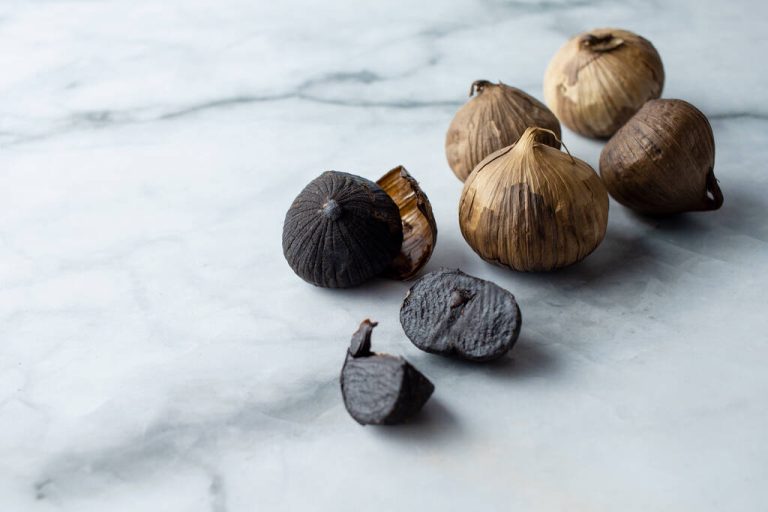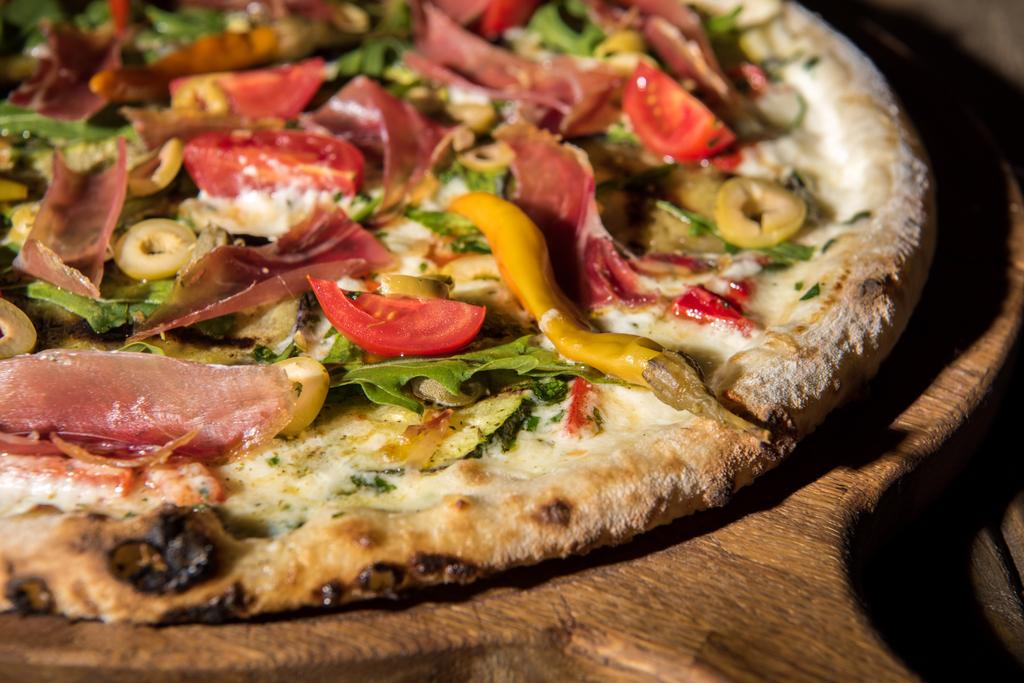Black garlic is an absolute insider tip for the kitchen. But how does the black tuber taste and what else can it do?

What is black garlic?
Black garlic or “Black Garlic” is a delicacy in Japan, China and Korea and belongs in every good kitchen there. But in the meantime, the black tuber has gradually become better known and, above all, more popular. However, the black bulb is not a special variety, but rather ordinary garlic (Allium sativum).
But where does the unusual color come from? The reason lies in the processing of the garlic. It is fermented for weeks in high humidity and heat. As a result, the sugar and amino acids contained in the garlic are converted into tanning substances, so-called melanoidins. The result: the tubers gradually turn black.
This fermented garlic is much easier on the stomach because it contains fewer polysaccharides. The fermentation also gives it a very special taste of vanilla, caramel or even plum and some liquorice
This is how you can ferment your garlic yourself
If you want to make your own fermented garlic yourself, you’ll need to prepare it a little differently. Because a week-long fermentation in the oven would be far too expensive. But if you can do without the black color, there are two simple production methods in particular:
With honey: peel the garlic and press it lightly. Then put it in a jar with a wire seal and pour honey over it until the jar is about 2/3 full. Keep the jar in a dark place for several weeks, turning it from time to time. Once the garlic has completely sunk in the honey, it’s done.
With salt: Make a saline solution by stirring 3 grams of salt into 100 milliliters of water. Place the peeled garlic cloves back into a mason jar and fill it 2/3 full with the brine. Now the jar is well sealed and put in the fridge for about four weeks. In the first few days you should open it briefly once a day and then close it tightly again.
Depending on your taste, you will like the sweet or salty variant of fermenting your garlic better. Try it yourself and then test your garlic in the kitchen.

Black garlic in the kitchen: the healthy black bulb goes well with it
Conventional garlic is inherently very aromatic and healthy. The little toes are antibacterial, can prevent cardiovascular diseases and are also considered a natural cholesterol-lowering agent. These are just some of the tuber’s effects. However, so-called secondary plant substances are still produced in the garlic as a result of the fermentation. They protect our cells and slow down free radicals. In addition, probiotics are produced, which protect both our intestinal flora and the immune system.
The Black Garlic is particularly popular in Asian dishes and is ideal for sauces and marinades. But in the meantime it is also becoming increasingly popular for pasta dishes. For example, you can also cook the classic spaghetti aglio e olio with black garlic. It is also ideal as “black” garlic butter. Serve them with fish, meat or potatoes, for example.
In addition to the flavor component, the black garlic is also ideal for decoration. However, you should rather use a copy from the Asian store. Like regular garlic, don’t use too much if you don’t tolerate it well or if you’re taking blood-thinning medication. Garlic can enhance the effects of such drugs. Otherwise you are doing something good for yourself, your health and your palate with black garlic!


















